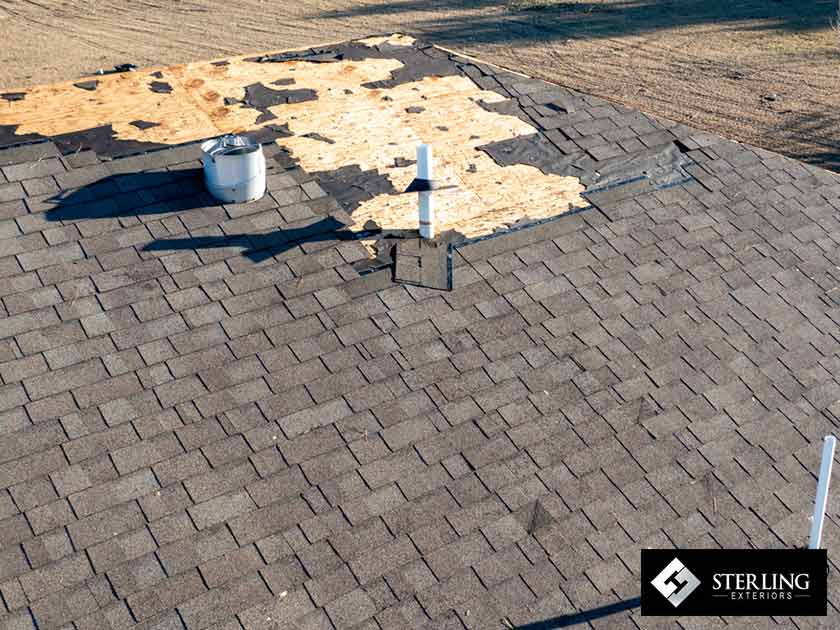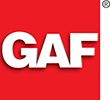In the state of Ohio, winter weather can wreak havoc on your roof if not properly maintained. The cold and wet conditions can leave your home vulnerable to leaks if you don’t catch them early enough. Understanding what causes winter roof leaks will help you prevent them from happening and minimize the damage they can cause should they occur.
Continue reading as Sterling Exteriors provides seven possible sources of winter roof leaks in this article.

Signs of Roof Leaks
If your roofing is leaking, you may see water stains on the walls or ceilings in the interior of your house. If a roof leak is not caught early enough, water may form pools on the floor, which can cause additional damage to other parts of your home. Other signs that you have a leaking roof include:
- Missing shingles
- Loose flashing around chimneys and vents
- Ice dams at ridges and valleys during cold weather
- Moldy odors inside when it rains outside
- Gutter overflow due to clogged downspouts or gutters filled with ice or snow buildup
7 Causes of Winter Roof Leaks
Winter roof leaks can have multiple causes, ranging from missing or damaged shingles to clogged gutters and poor ventilation. Here are seven of the most common causes:
1. Ice Dams
Ice dams occur when warm air from the interior of your home leaks through the attic and causes snow on your roof to melt. This can create a pool of melting water which can then freeze again at the edge or ridge, forming an ice dam. The presence of this ice dam blocks drainage, causing water to back up and penetrate your underlayment and eventually seep into your home.
2. Missing or Damaged Shingles
Heavy rain and snow can cause damage to your roofing, such as missing or damaged shingles. The absence of several shingles allows water to penetrate through the panels affecting the interior of your home and leading to leaky roofs.
3. Cracked or Missing Flashing
Flashing is installed around bedrooms, chimneys and knee walls to prevent water from leaking in. Cracks or missing pieces of flashing can leave your home vulnerable to water seepage and interior damage.
4. Clogged Gutters
Clogged gutters are an often overlooked cause of winter roof leaks. When gutters become clogged with leaves, pine needles and other debris, they can overflow when it rains or snow melts. This additional water puts added pressure on the edge of your roof, leading to potential interior damage in case of heavy rain or rapidly melting snow.
5. Poor Ventilation
Your attic or roof needs to be properly ventilated to keep things dry. Poor ventilation can cause condensation that, when combined with cold winter temperatures, can lead to a leaky ceiling and further damage your home’s insulation.
6. Structural Problems
Damage to the structural components of your roof is also a leading cause of leaking during wintertime. Structural damage may include buckling, unit shifting or rot due to water infiltration through older and worn-down shingles.
7. Plumbing Leaks
Not every leak is actually related to your roof. Sometimes, the issue is elsewhere, like your plumbing. Similarly, the problem may not even be leaking at all. Other issues, like attic condensation, may just be mirroring the signs of roof leaks. A general contractor can assess the issue and determine the actual source of the leak.
Prevention and Solutions for Winter Roof Leaks
To prevent water from entering your home and causing damage, inspect the state of your roof regularly. Below are a few preventive measures that can help you avoid winter leaks and keep your home safe:
Regular Gutter and Downspout Cleaning
Cleaning the gutters and downspouts at least twice a year will help prevent water from accumulating and other debris from restricting the free flow of rainwater. Maintaining clear pathways for drainage is an easy way to keep your home leak-free.
A professional roofing contractor can inspect and clean your gutters and help prevent major issues. They can also check for any damage in the shingles, catching any obstructions or areas that need extra attention before it causes problems. A qualified roofing contractor can also safely and effectively clean your gutters during the winter months. They know what to look for so that any potential issues are identified early on.
Get Regular Roof Inspections
Even if no visible signs of a leak are present, remember to get your roof inspected! Professional inspectors can detect damage that you may be unable to find. This is especially important during winter when temperatures start changing and ice dam formation becomes more frequent and problematic. Getting regular inspections will help prolong the life of your roof and minimize potential leaks in the future.
It’s recommended to get your roof regularly inspected at least twice a year. During the winter months, it is best to have an inspection done more frequently, especially if your region experiences heavy snowfall or ice dams are a common occurrence.
Upgrade Insulation
If your attic does not have sufficient insulation, it can cause condensation. Check for any gaps or weak spots, and make sure to fill them with more insulation. This will help regulate the temperature in the attic during winter months and help prevent moisture from forming on the interior-facing side of the roof decking.
Check Ventilation
Check your attic or roof space and ensure that air can properly circulate. You should also ensure your soffits are not blocked by insulation as this can restrict airflow, which will cause the warm air from inside your home to escape.
Check Flashing
Finally, you should also check your roof’s flashing. Flashing is necessary to install along ridges and valleys, chimneys, and walls to prevent water from leaking into your home. Make sure any flashing that’s installed on your roof is put together tightly with no gaps or holes. If there are any issues, make sure to get them fixed right away!
Winter can be particularly harsh on your roof, so taking these proactive steps will help prevent future leaks. By regularly inspecting and cleaning gutters, getting regular inspections from an experienced contractor, upgrading insulation in the attic, checking ventilation, and examining flashing along your ridges and valleys, you can minimize the chances of experiencing water damage this winter season.
If you’re concerned about winter roofing leaks in Cincinnati, Loveland or Newtown, OH, the best thing to do is to contact a qualified professional for help. The team at Sterling Exteriors has the experience and expertise necessary to properly inspect your roof and make any repairs that are needed. We can also help you take preventive measures to avoid winter roof leaks in the future. Contact us today at (513) 685-8055 to schedule a consultation.






